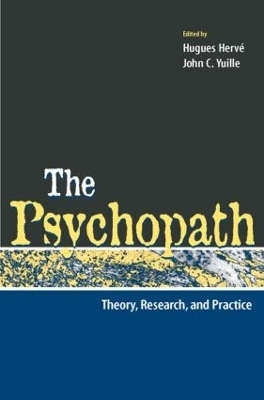
The Psychopath
Routledge (Verlag)
978-0-8058-6079-5 (ISBN)
The Psychopath: Theory, Research, and Practice is a comprehensive review of the latest advancements in the study of psychopathy. As research into psychopathy over the past two decades has burgeoned, it has had significant implications for clinical practice, with important ethical considerations raised as interest into psychopathy has moved into the real world. This volume is the first comprehensive review of these applied topics.
Dr. Robert Hare, a leading authority on the subject, introduces the work by discussing the current state of psychopathy research, highlighting its advancements, potential pitfalls or impediments, and future trajectory. Subsequent chapters give a historical overview of psychopathy, examine measurement issues, etiological theories, and practical considerations. The Psychopath provides a solid foundation from which research and practice into this socially destructive condition can advance into the 21st century.
This book will attract academics, researchers, theorists, practitioners, lawyers, judges, law enforcement personnel, students, and other professionals interested in or working with forensic psychology. It also serves as a supplementary text for graduate students enrolled in programs with a specialization in forensic psychology or criminology.
Herve, Hugues; Yuille, John C.
Contents: Preface.Introduction. R.D. Hare, Forty Years Aren’t Enough: Recollections, Prognostications, and Random Musings. Part I:The Evolution of the Construct.H. Hervé, Psychopathy Across the Ages: A History of the Hare Psychopath. G.T. Harris, M.E. Rice, Psychopathy Research at Oak Ridge: Skepticism Overcome. Part II:Methodological and Measurement Issues.C.S. Neumann, D.S. Kosson, R.T. Salekin, Exploratory and Confirmatory Factor Analysis of the Psychopathy Construct: Methodological and Conceptual Issues. D.M. Bolt, Analyzing the Psychopathy Checklist-Revised Using Factor Analysis and Item Response Theory. J.F. Hemphill, The Hare Psychopathy Checklist and Recidivism: Methodological Issues and Critically Evaluating Empirical Evidence. Part III:Etiology. J.P. Newman, C.A. Brinkley, A.R. Lorenz, K.D. Hiatt, D.G. MacCoon, Psychopathy as Psychopathology: Beyond the Clinical Utility of the Psychopathy Checklist-Revised. C.J. Patrick, Getting to the Heart of Psychopathy. C.M. Herba, S. Hodgins, N. Blackwood, V. Kumari, K.H. Naudts, M. Phillips, The Neurobiology of Psychopathy: A Focus on Emotion Processing. Part IV:Characteristic Behaviors and Problems.S. Porter, S. Porter, Psychopathy and Violent Crime. M.E. O’Toole, Psychopathy as a Behavior Classification System for Violent and Serial Crime Scenes. A. Spidel, G. Vincent, M.T. Huss, J. Winters, L. Thomas, D. Dutton, The Psychopathic Batterer: Subtyping Perpetrators of Domestic Violence. Part V:Generalizability of the Construct. P.J. Frick, Using the Construct of Psychopathy to Understand Antisocial and Violent Youth. A. Forth, A.S. Book, Psychopathy in Youth: A Valid Construct? R. Jackson, H. Richards, Psychopathy in Women: A Valid Construct With Clear Implications. P. Babiak, From Darkness Into the Light: Psychopathy in Industrial and Organizational Psychology. Part VI:Psychopathic Subtypes: Measurement and Implications.H. Hervé, Psychopathic Subtypes: Historical and Contemporary Perspectives. S.C.P. Wong, G. Burt, The Heterogeneity of Incarcerated Psychopaths: Differences in Risk, Need, Recidivism, and Management Approaches. Part VII:Practice Concerns. B.S. Cooper, J.C. Yuille, Psychopathy and Deception. D. Thornton, L. Blud, The Influence of Psychopathic Traits on Response to Treatment.
| Erscheint lt. Verlag | 25.9.2006 |
|---|---|
| Verlagsort | New York |
| Sprache | englisch |
| Maße | 156 x 234 mm |
| Gewicht | 1110 g |
| Themenwelt | Geisteswissenschaften ► Psychologie |
| Medizin / Pharmazie ► Medizinische Fachgebiete ► Psychiatrie / Psychotherapie | |
| ISBN-10 | 0-8058-6079-7 / 0805860797 |
| ISBN-13 | 978-0-8058-6079-5 / 9780805860795 |
| Zustand | Neuware |
| Haben Sie eine Frage zum Produkt? |
aus dem Bereich


